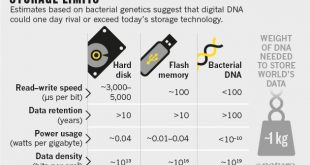Related Articles
Introduction:
The Defense Advanced Research Projects Agency (DARPA) is renowned for its cutting-edge research initiatives that push the boundaries of technological innovation. DARPA’s latest endeavor, FoundSci, seeks to develop an “autonomous scientist” powered by AI to support researchers in their quest for new knowledge. This comprehensive article delves into the background, enabling technologies, military importance, technical areas, and program details of DARPA FoundSci.
Background:
Scientific discovery plays a pivotal role in advancing various fields, from medicine to materials science. Traditionally, researchers rely on human expertise and intuition to formulate hypotheses and conduct experiments. However, this process is often time-consuming, resource-intensive, and limited by human cognitive biases. DARPA recognized the need for a revolutionary approach to scientific exploration that leverages AI to augment human capabilities.
The autonomous scientist will possess the ability to generate unique hypotheses, considering factors like experimental scalability, cost reduction opportunities, and skeptical reasoning. DARPA emphasizes that the goal is to make the research process at least 10 times more efficient in terms of scalability and time.
The concept of the autonomous scientist is not to replace human researchers but to assist them in generating novel hypotheses and conducting experiments efficiently. DARPA envisions this AI tool as a complement to human ingenuity, leveraging diverse sets of data to develop creative and scalable theories.
Use cases for this technology span various scientific domains, from climate modeling to materials discovery. For instance, the autonomous scientist could aid in computational biology experiments, such as protein folding, by suggesting innovative approaches for drug discovery.
“What we’re trying to do is replicate the success that we’ve seen for automatic code generation,” Alvaro Velasquez, DARPA’s program manager for Foundation Models for Scientific Discovery, told Nextgov/FCW. “Right now, software engineers and coders enjoy these tools from OpenAI and Microsoft that help automate the generation of code. We would like to come up with a tool that helps automate the process of scientific discovery.”
Enabling Technologies:
DARPA FoundSci harnesses cutting-edge AI technologies to create autonomous scientists capable of generating hypotheses, designing experiments, and analyzing data. Key enabling technologies include:
- Machine Learning: Advanced machine learning algorithms enable autonomous scientists to learn from vast amounts of data and extract meaningful insights.
- Natural Language Processing (NLP): NLP techniques empower autonomous scientists to interpret scientific literature, formulate hypotheses, and communicate findings.
- Reinforcement Learning: By employing reinforcement learning algorithms, autonomous scientists can optimize experimental designs and adapt to changing environments.
- Knowledge Representation: Sophisticated knowledge representation frameworks allow autonomous scientists to organize and reason over complex scientific domains effectively.
Military Importance:
This effort envisions an autonomous scientist possessing the ability to characterize its own uncertainty and skepticism, and use them as drivers to systematically acquire and refine its scientific knowledge bases, in a way that human scientist partners can trust. The resulting capability would augment DoD research (such as in DoD service labs) and accelerate discovery in any discipline (e.g., the discovery of new materials or the discovery of new computing architectures to robot designs), especially in an era where the volume of experimental data and research papers are increasing exponentially.
The development of autonomous scientists holds significant implications for military research and development. By accelerating the pace of scientific discovery, DARPA FoundSci can enhance the military’s capabilities across various domains, including:
- Materials Science: Autonomous scientists can accelerate the discovery of advanced materials with military applications, such as lightweight armor and stealth coatings.
- Biotechnology: AI-powered research tools can expedite the development of vaccines, therapeutics, and biodefense technologies to safeguard military personnel.
- Cybersecurity: Autonomous scientists can aid in the identification and mitigation of cybersecurity threats, enhancing the resilience of military networks and systems.
- Aerospace Engineering: AI-driven design tools can optimize aircraft and spacecraft performance, leading to more efficient and capable military platforms.
Should the autonomous scientists result in a safe and useful AI tool, the winning foundational models could be used to solve other challenges at DARPA and beyond. Velasquez said that he would love to see it applied across other government research institutions, like the Air Force Research Lab and the Naval Research Lab
Technical Areas:
Proposals for this contract opportunity are intended to not just train an autonomous scientist to learn the vast data inputs required for advanced generative output, but to extrapolate novel and unique hypotheses to test based on the scientific parameters within various disciplines.
DARPA FoundSci focuses on two primary technical areas:
- Autonomous Scientist and Foundational Models: This technical area aims to develop AI agents capable of generating hypotheses, designing experiments, and refining scientific knowledge autonomously.
- Evaluation of Creativity: This area focuses on defining metrics and methodologies to evaluate the creativity and effectiveness of autonomous scientists in generating novel scientific insights.
Program Details and Phases:
To achieve this ambitious goal, DARPA is inviting submissions for foundational AI models through an Artificial Intelligence Exploration (AIE) Opportunity. This initiative aims to develop AI agents capable of skeptical learning and reasoning, facilitating scientific discovery at scale.
The total effort will be 18 months structured into two Phases. The 12-month Phase 1 will focus
on algorithm development and feasibility study and the 6-month Phase 2 will focus on detailed
evaluation of proof-of-concept in a scientific domain
The DARPA FoundSci program is structured into two phases:
- Phase 1: Feasibility Study (12 Months): During this phase, researchers will focus on algorithm development and feasibility studies to demonstrate the capabilities of autonomous scientists in specific scientific domains.
- Phase 2: Proof of Concept (6 Months): In this phase, selected projects will proceed to develop and evaluate prototype autonomous scientists in real-world scientific settings. Evaluation metrics will assess scalability, time efficiency, and creativity.
Conclusion:
DARPA FoundSci represents a paradigm shift in scientific exploration, leveraging AI to create autonomous scientists capable of accelerating the pace of discovery across various domains. By harnessing advanced technologies and fostering interdisciplinary collaboration, DARPA aims to revolutionize scientific research and bolster military capabilities in the 21st century and beyond.
 International Defense Security & Technology Your trusted Source for News, Research and Analysis
International Defense Security & Technology Your trusted Source for News, Research and Analysis



